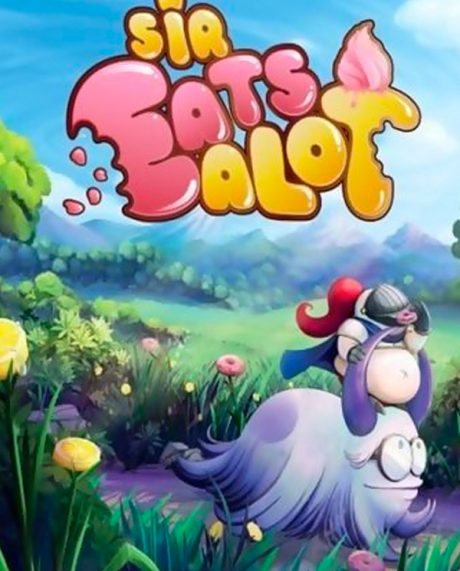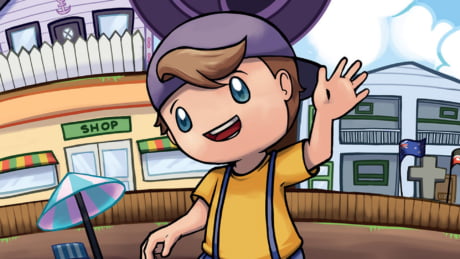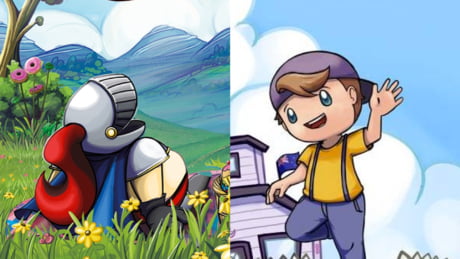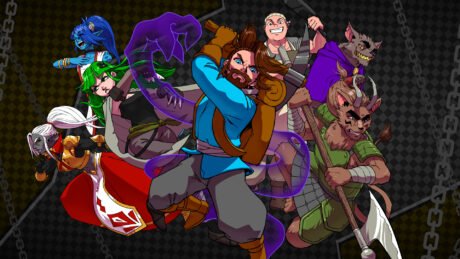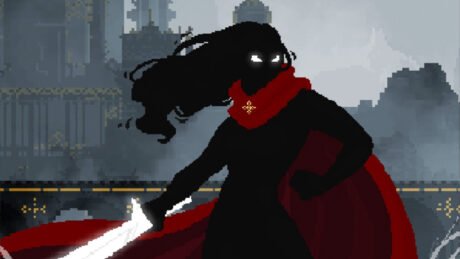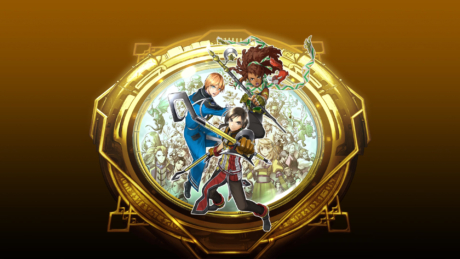Purrr....
- Humor
- Characters
- Cartoony art style
- Stickers
- Use of Vita’s features
Hisss!
- Character moves so slowly
- Jumping
- Minor frame rate issues
- Touch controls not always responsive
- Game-breaking bug in Chocogrotto
Platform
VitaPublisher
EastasiasoftDeveloper
Behind the StoneGenre
Adventure, PlatformPlayers
1File Size (Minimum)
562.91 MBRelease Date (NA)
Apr 6, 2018Sir Eatsalot, the debut title from German indie studio Behind The Stone, is a cartoony 2D platformer full of great humor and wit. However, this PlayStation Vita exclusive, inspired by the many indie and mobile app store games that came before it, contains flaws that keep it from being a delightfully delicious experience.
Gluttington’s Finest
The kingdom of Gluttington, ruled by King Dietan III, is happy and peaceful, but the evil sorceress Hysterica, who lives in the Isotonic Isles, poisons the water supply with sour lemonade in an attempt to overthrow the king and take the throne for herself. In response, the king sends his bravest knight, Sir Eatsalot, to put a stop to her dastardly plans.
As Sir Eatsalot, your adventure begins immediately after receiving the letter with the king’s orders, setting off in traditional platformer fashion to the right, but right from the start, you’ll notice something a little different about your character — he is slow. It should be of no surprise given that he’s a fat knight who can’t even find armor large enough to fit his giant gut, but he moves like a snail compared to heroes like Mario or Kirby, which certainly takes some getting used to. Plus, while the adventure is mostly a linear experience, there are times when backtracking is needed, and it can be a bit of a slog to get to where you need to go. Thankfully, he has the ability to run, but that is tied to a meter that quickly runs out if you go at it for more than five seconds. And it doesn’t recharge automatically once spent; the only way to refill it, and your life meter, is by eating the various foods seen in the background and foreground of each level, which lets you be true to your namesake. Still, it’s recommended to conserve the meter, if only because you’ll be doing a lot of running jumps in the game.
As with most platformers, there are plenty of bottomless holes in your path, but with most of ones in this game, it often feels like you won’t make it to the other side when you leap over them. Sir Eatsalot is certainly a big guy, so his jumps are fittingly weighty. If you’ve ever seen a video where a cat spends time preparing to make a long jump, then falls woefully short immediately after take-off, it’s kind of like that, so prepare for some needless deaths. Be especially wary of the Isotonic Waters level. Considerable slowness occurs in a few sections as you’re trying to jump across barrels, which is deadly in a genre that relies on precision jumping and timing .

Of course, death by environment isn’t the only danger you’ll face. Hysterica teamed up with the Rat Clan to provide some muscle for her takeover, so you’ll be fighting Rat Warriors, Bruisers, Cheesebombers, and more. Fortunately, as a knight, you do have a sword and shield, but it takes a good second after the button press to swing your sword. Plus, foes flash after taking damage, so you’ll need to wait a few seconds before you can hit them again. At least blocking is instantaneous, but since you’ll be pushed backward a short distance when you’re attacked, be mindful of any holes or obstacles behind you. That said, enemy encounters are not prevalent. Early on, they exist to break up the monotony of hole-jumping, but later in the game, they are carefully positioned for maximum annoyance like in the classic Mega Man games. The Cheesebombers are especially irritating because they throw cheese-grenades that ensnare you in a sticky mess on contact, leaving you open to attacks from others. Escaping takes several seconds, and once freed, you can easily be hit by another one and have to start the whole process over.
When you do bite the big one, you won’t lose any lives like a standard platformer. The adventure is essentially one long series of rooms that you have to walk through, so when you die, you’ll only have to start the room over again. However, you will have to replenish your health and refill your run meter each time, and while there is usually food close by, sometimes there isn’t. This can be a problem if you need to battle your way through some tough enemies and you only have one or two hearts (of three), or if your run meter is low and you need to make several long jumps. This is the final area in a nutshell, so perfect your abilities beforehand.
Recipe for Success (and Failure)
Saving the kingdom isn’t the only task the pot-bellied knight will be undertaking. As you make your way to the sorceress’s lair, you’ll run into folks who need your help, and to keep track of these extra quests and any related key items, you have an adventure journal. From travel and mining permits and a mysterious ball of yarn to a certificate for learning jousting in five minutes or less, you will be able to keep track of everything you need… except in one major, game-breaking case.
In Chocogrotto, an underground area, there is a serious bug involving your carrot lamp. Many parts of this section are pitch black — you literally cannot see anything — and the only way to illuminate the path is with said lamp, which requires you to constantly charge it at spots that are exposed to the sun. These spots are generous, so you’ll be able to make it through easily enough. The problem arises in your initial travels when you encounter a door back to Broccoli Grove and you’re curious enough to investigate. If you leave Chocogrotto, re-enter, and continue on your merry way, the carrot lamp just inexplicably disappears from your inventory — and the game doesn’t tell you this. Moreover, the game auto-saves every time you enter a new section, so by the time you realize the lamp is gone, you can’t just reload an old file and start again. Therefore, your options are to either to: 1) fight past enemies and jump bottomless pits in complete blackness and hope you manage to make it back to the main lighted area, 2) consider the five hours it took to get to that point in the game a wasted effort and start over, or 3) stop playing and move on to a different game. Option two is a hard pill to swallow and no one would blame you if you chose option three, but option one is doable with some trial and error and a good ear.
After contacting the game’s developers about this problem, they admitted that losing the lamp in this way was intentional but that you also could talk to the creature at the entrance of the Broccoli Grove doorway and get another one. In addition, they said they would patch the game so that it was more clear that this would happen, but in the meantime, be warned: curiosity definitely almost killed this cat.
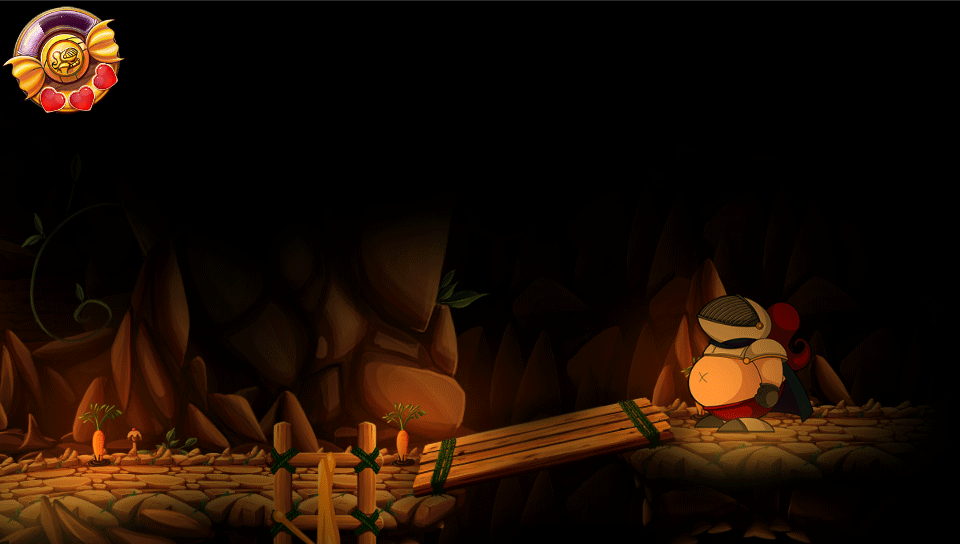
A Touch of This, a Pinch of That
Aside from traditional button-based controls, the game makes extensive use of the PlayStation Vita’s features, especially its front and rear touch capabilities. From popping balloons, ripping posters down, and cleaning off ladders to flipping switches, jousting, and removing sugarstones that block your path, you will be doing a lot of tapping, rubbing, and swiping over the course of the adventure. Basically, wherever the developers felt touch would make sense, they added it to the game, and its usage makes sense for the most part. If you want to open a door in an underground office, knocking first is polite and expected. Similarly, triggering a bear trap requires a simple tap before you can safely walk by. But the quirkiest use of the touch controls is with the stickers in the game. Early in the game, you’re told you can learn more about all the creatures you see, friendly or otherwise, by making stickers out of them. In order to do so, you need to tap the creature and then trace its outline. Easy, right? Well, the shapes can be complex and, for whatever reason, the segment is timed, so you’ll probably fail a bunch of times at first. Also, it’s a little hard to finish tracing with your finger in the way. However, once you get the hang of it, you’ll be putting out stickers like a pro. Plus, the information gleaned from their creation is worth it.
There is a major problem with the touch controls, however. The action resulting from the touch either doesn’t happen as quickly as you’d expect it to or it simply doesn’t happen at all, and unfortunately, it’s an issue throughout most of the game. It starts with the edible food that can be seen in the foreground and background of each level. Tapping it once will usually get it to drop so you can eat it, but good luck consistently selecting it the first time after that. It’s just as bad when you’re trying to roll logs off platforms to crush enemies underneath or lower raised bridges. You’ll either get to work on the first swipe or the sixth, and it’s even more frustrating when you have to continuously avoid a Cheesebomber’s grenades while doing it. In more than a few instances, and one boss battle, you’ll literally find yourself fighting the controls more than the actual enemies on-screen. However, it’s difficult to say whether this is a result of the front and rear touch interfering with one another because of the way I held the Vita or something else. Either way, it’s irritating.
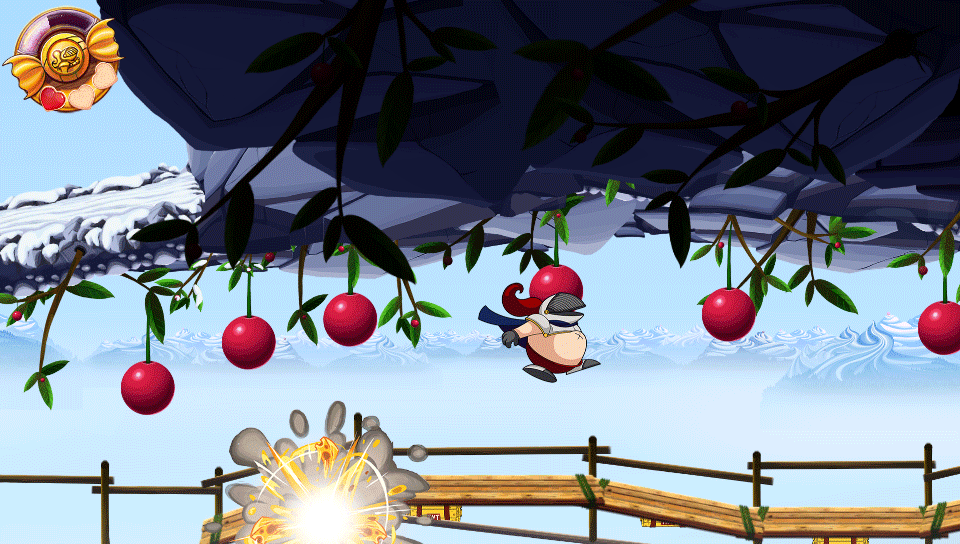
On a lesser note, when performing touch actions such as rubbing the cheese off ladders (or yourself) or turning a wheel to open a door, it feels like completing these take a few seconds longer than they should. Granted, two or three extra seconds doesn’t sound like much, but it’s definitely noticeable when you’ve already spent five on it. You just want to get a move on already.
Aside from the touch features, the game takes advantage of the Vita’s camera for a segment underground where you have to charge your lamp with the power of the sun (or an indoor light). Sure, it’s gimmicky and you have to do it every thirty seconds, but it’s still a neat way to use the hardware. Even the built-in gyroscope gets used a little for sailing your boat. By tilting the Vita left and right, you move in the respective direction, though admittedly it’s not as precise as using an analog stick or directional pad would have been.
A Feast for the Eyes
Even if maneuvering through through the game gets a little tricky, the quest itself is full of wondrous sights. As befitting the name Sir Eatsalot, the game is packed with food references and their cartoony realization in the world is delightful. The vegetation in the starting area of Broccoli Grove naturally consists mainly of giant broccoli crowns, but the flowers that grow in between them are topped with pink-icing doughnuts that come straight out of The Simpsons. The ground and trees on Mt. Creme are covered in swirling mounds of whipped cream, and in Chocogrotto, rich brown veins of Cocoa lentils are mined. Similarly, Culinaria is a smorgasbord of towering cucumbers, bacon-rolled plants, and fork-and-spaghetti structures. Furthermore, each unique location is well depicted with bright, bold, cartoony colors and even includes little animated flourishes like shaking plants and even animals moving around in the background. Furthermore, the parallax scrolling in these areas only add icing to the cake.
The characters are equally well designed. Sir Eatsalot himself is larger-than-life hero with an enormous, exposed belly that jiggles as he walks and a wonderfully expressive helmet that showcases his many moods. Likewise, her evilness, the would-be-queen Hysterica is cartoonishly wicked with harsh, jagged lines and a temper that often rears its giant, raging head. Her minions, from the Rat Clan to the Black Knight, follow suit as baddies that look like they came right out of a Saturday morning cartoon, and the same goes for the more law-abiding Chocolate golems.

Good Humor
The visuals aren’t the only place where Sir Eatsalot excels; the game’s humor is impeccable with a wit as sharp as Cheddar. Sir Eatsalot may look like a buffoon, but he’s actually a smart and relatable guy who has no qualms pointing out the obvious about the absurd situations he finds himself in. For example, the Chocolate golems are a particularly pedantic bunch who are less concerned about Hysterica’s evil deeds than the fact that she didn’t fill out the appropriate forms to do it. When Sir Eatsalot visits them, hoping to acquire a substance that will stop the sorceress dead in her tracks, the golems don’t just give it to him, even though he points out that the fate of the entire kingdom is at stake. No, they make him get not one, not two, but three administrative forms first much to his dismay. Still, as an honorable knight, he does it anyway.
The villains get their share of the fun, too. In between major events are scenes where Hysterica and her top minion talk about Sir Eatsalot’s incessant progress. Although it’s a familiar setup where the minion never has any good news and she gets increasingly annoyed until she blows her top by the end, it’s always an exchange worth a chuckle or two, especially due to the minion’s ever-adaptive formal titles for his master like “Your Recklessness” or “Your Ruthlessness.” Furthermore, who won’t snicker at the sight of Hysterica’s “Make Gluttington Great Again” posters that are scattered across the kingdom.
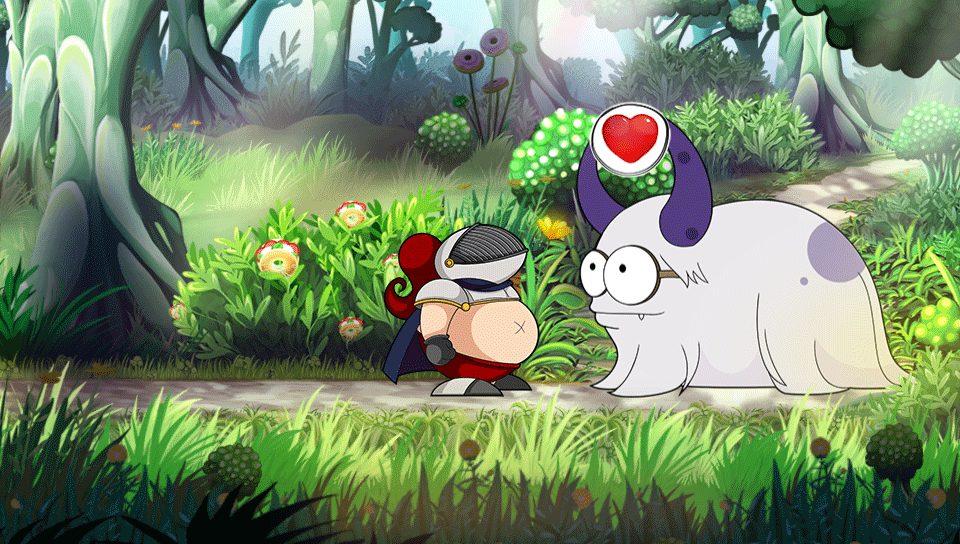
Good Enough to Eat
Overall, Sir Eatsalot is an admirable debut effort: a good-looking, funny adventure that’s unfortunately hampered by some key technical and design issues. Nonetheless, the passion that went into every aspect of the game is clear, and I look forward to seeing what Behind The Stone serves up next.
Disclaimer: A digital review copy was provided by Behind The Stone.
